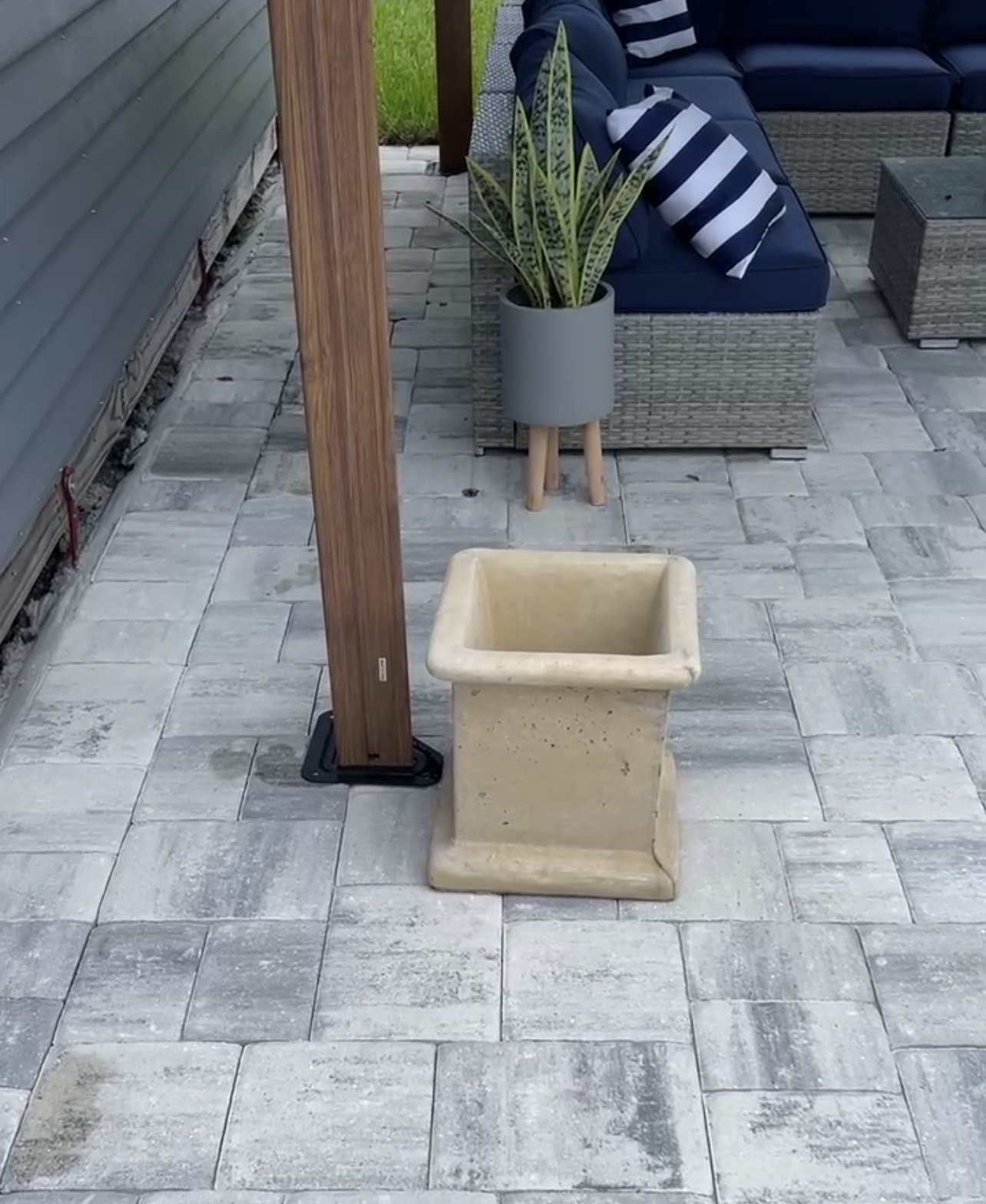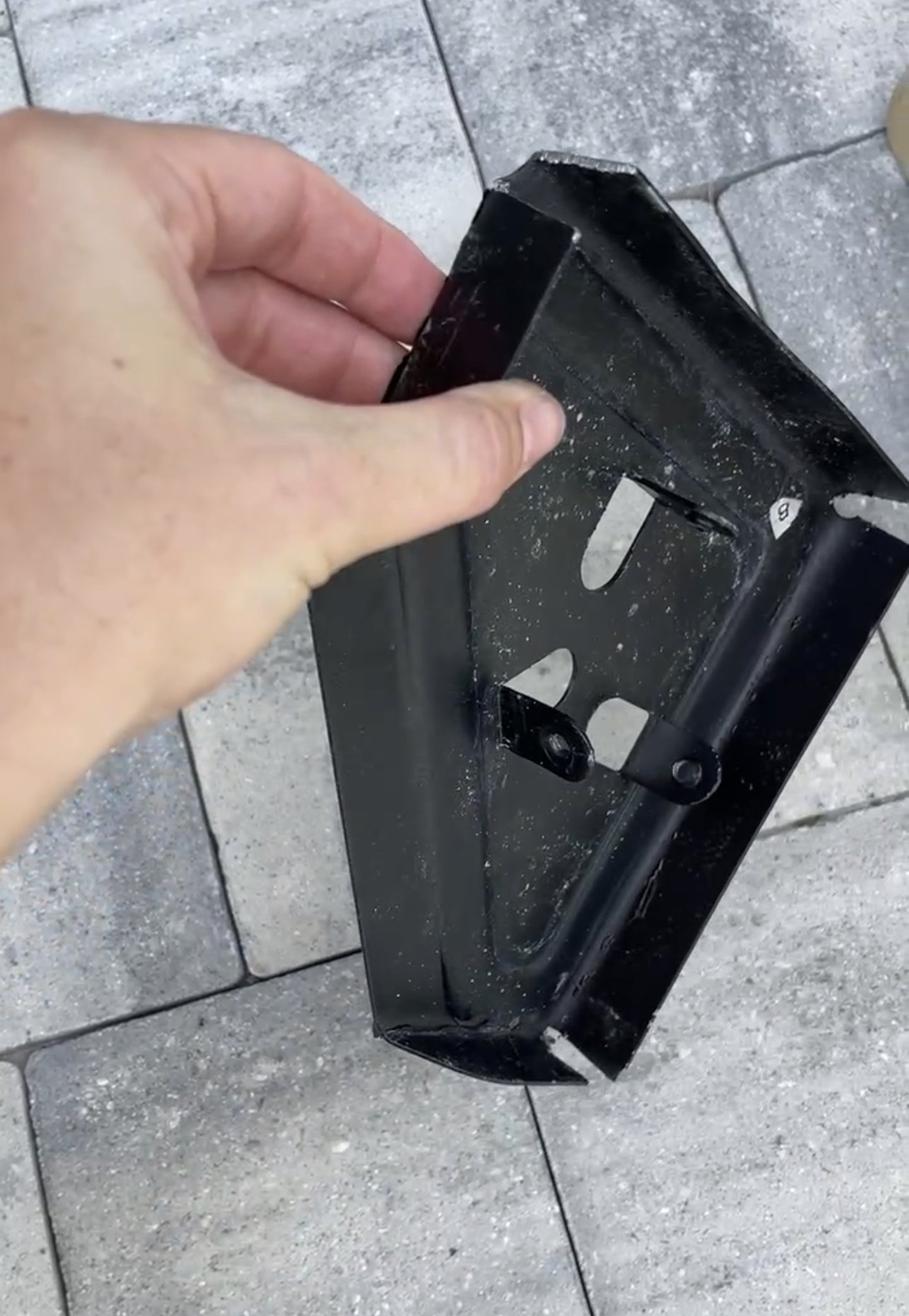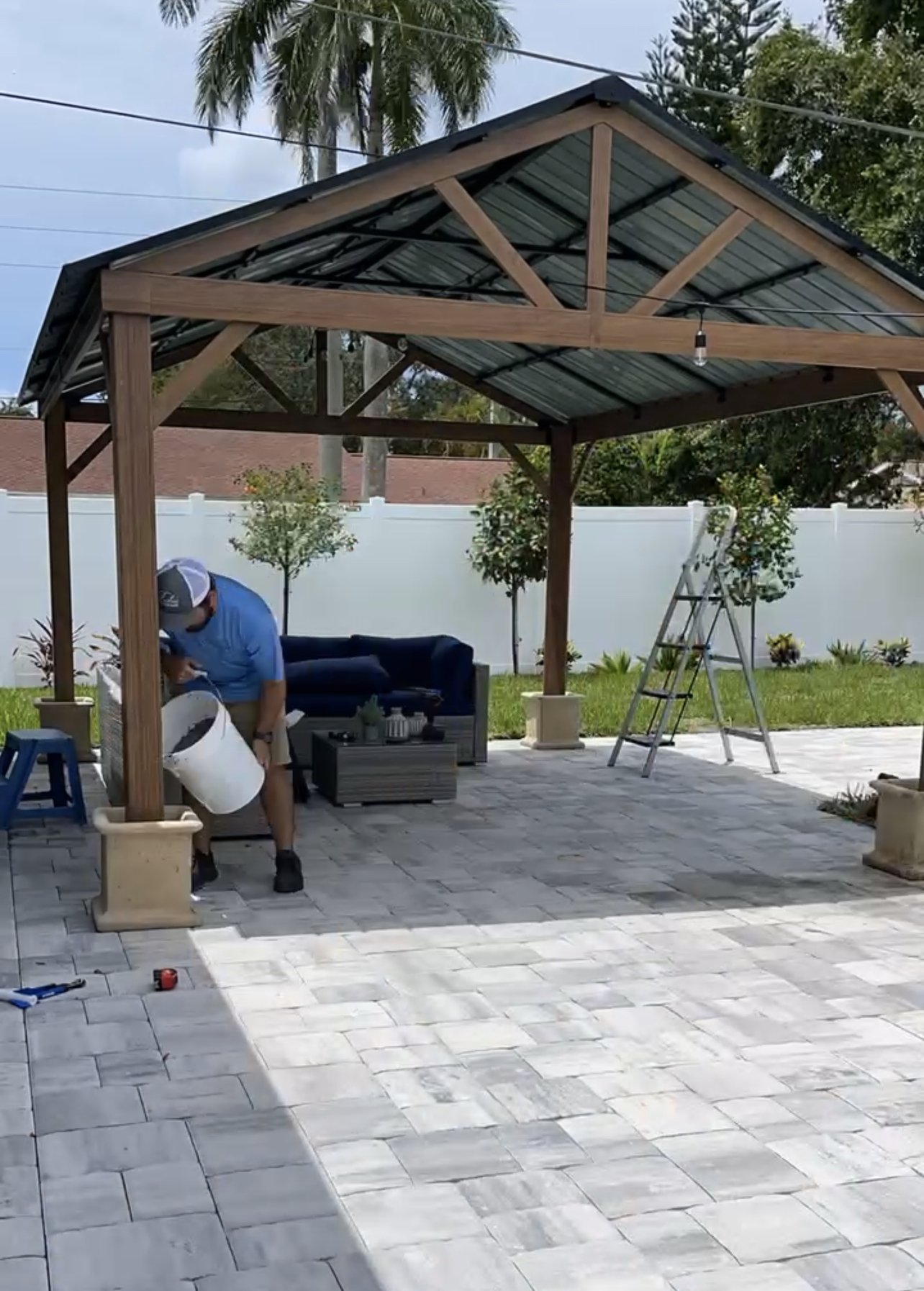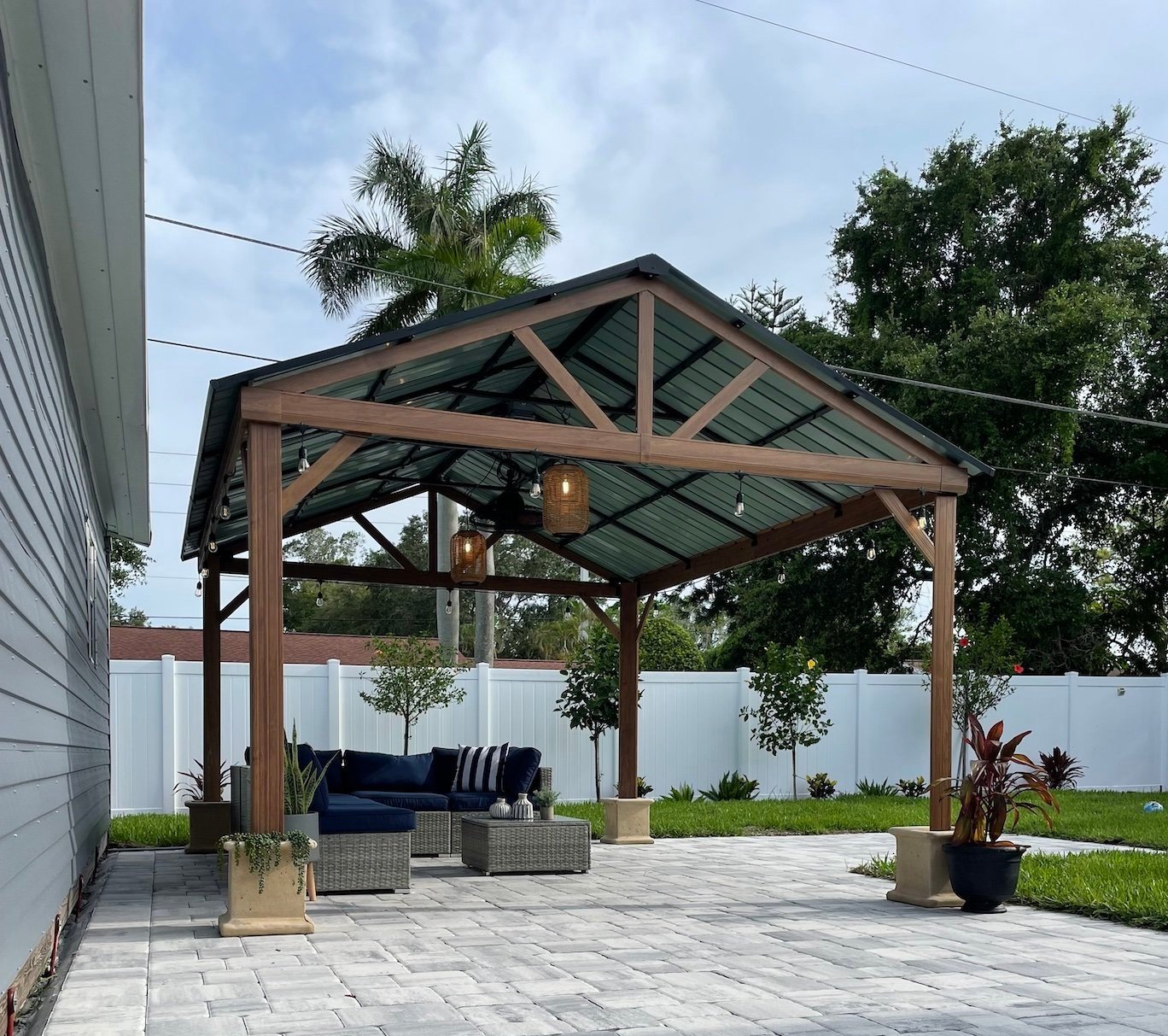Anchoring Down a Gazebo
If you’ve been following me on Instagram you know that we have been doing a total backyard transformation this summer. Part of that makeover was setting up our new hardtop gazebo.
Since our gazebo sits on top of our new paver patio, we wanted to find a way to anchor down or weigh down our gazebo without having to pull up the newly installed pavers. I am going to show you how we decided to weigh down our gazebo.
Before we begin, I want to make sure I say that every county in the US has different codes and regulations around what they require for anchoring down gazebos and pergolas. I recommend you double check with your city or county to see if there are any rules you need to be following. In my county, they only require permanent structures to be anchored down with concrete footers and they do not consider a gazebo or pergola to be a permanent structure. Because of that, we had the freedom to choose how we want to weigh down our gazebo.
How to anchor or weigh down a gazebo or pergola:
We spent some time surfing Pinterest looking for different ideas on how we could anchor down our new gazebo. We really liked the ideas we saw that used weighted planters filled with concrete. At one point we considered building our own square wood planters that could go around the legs of the gazebo but decided to take a trip to the hardware store to see what planters they had available.
While looking in the garden section at Lowe’s we stumbled on a clearance section of large planters. It may have been destiny because there were 4 heavy concrete planters that were square shaped and exactly what we had in mind. We estimated that they weighed 40-50lbs a piece which we also liked. In addition to the planters, we picked up two bags of Sakrete Fast Setting concrete mix.
Here is the exact gazebo we have - Click Here and also sold Here
Here are the planters we used - Click Here and an additional option - Click Here
Here is the concrete mix we used - Click Here
The legs of our gazebo had flat feet-like brackets on them which ended up being a bit too large to fit inside the planters we just purchased. Instead of completely removing these feet, we used a grinder and a vise to cut and bend the feet to fit in the planters.
Our thought process was that the feet on the legs of the gazebo would give the concrete in the planter something extra to bind to and the feet would help the legs of the gazebo stay weighted down.
Now that the feet of the gazebo fit inside the planters, we got help from my father-in-law and the three of us lifted each side of the gazebo and set the legs into the planters. We used a long level to make sure the legs and framing of the gazebo were all straight and as plumb as we could get them before adding the concrete to the planters.
For the first two planters we poured the concrete mix into a 5-gallon bucket, added water, mixed the concrete and then poured the concrete into the planters. The concrete we bought was ‘fast-setting’ and we noticed that it was already firming up by the time we poured it into the planters.
So for the last two planters, we poured the dry concrete mix directly into the planters, added water and mixed them very thoroughly directly in the planter which was much easier.
At this point we figured we were done. But a week of rain later, we realized that rain water was collecting in the planters. This was a problem for many reason - mosquitos, stagnant water, and the aluminum gazebo legs sitting in water to name a few.
So to remedy this, we simply used a masonry bit on our drill and drilled one small hole in the side of the planter so the water could drain out and that did the trick! You could fill your planters to the very top with concrete too. We purposely left room at the top of our planters so we could add some flowers to the planters.
I am considering filling the top part of the planters with rocks and either fake or real plants. Since I don’t have a green thumb, I will probably go with fake plants. You could definitely do real plants if you add the drain hole to your planters and fill the top part with soil.
So overall we are really happy with this solution to weighing down our gazebo! It may not be a permanent solution and it may not be completely hurricane proof but we are very confident that it can withstand some very strong winds and storms.
Like mentioned above, use your best judgement and take into consideration the weather where you live and the rules around gazebos and pergolas.
UPDATE THREE YEARS LATER
It has been three years since we anchored down our gazebo and it has made it through three hurricane seasons here in Florida. Immediately after anchoring down the gazebo and writing the original blog post, we had almost a direct hit from Hurricane Ian.
We were evactuated and the hurricane made landfall just south of us and we saw wind gusts of close to 100mph in our town. In 2023, we had another major storm, Hurricane Idalia, that hit north Florida sending big wind gusts and storms our way. Then again in late 2024 we were hit again. I am happy to report that during these hurricane seasons we had absolutely zero damage or movement in our gazebo. The weighted concrete planters have proved to be a great anchoring solution.









HEY THERE, I’M ASHLEY!
Here to inspire beginner DIYers!